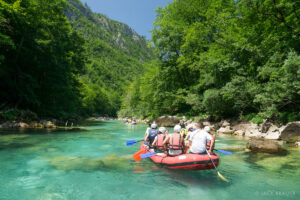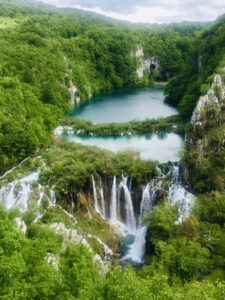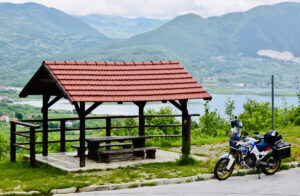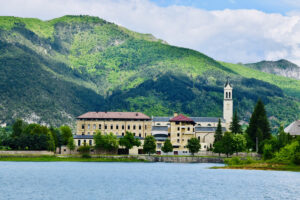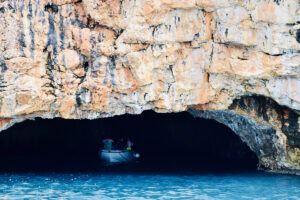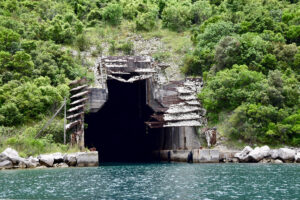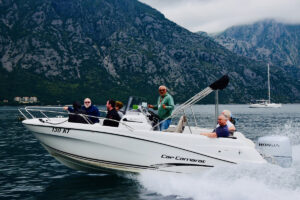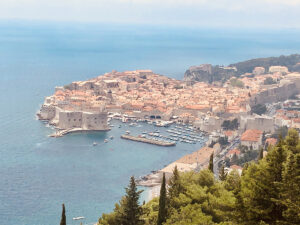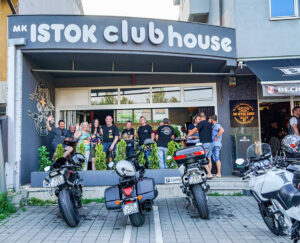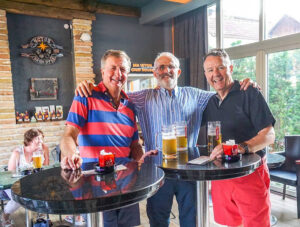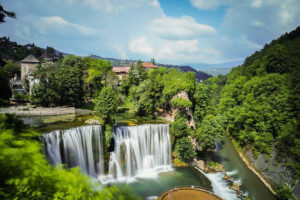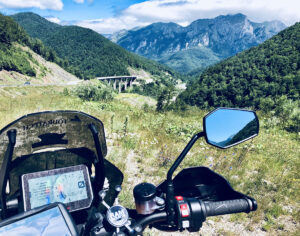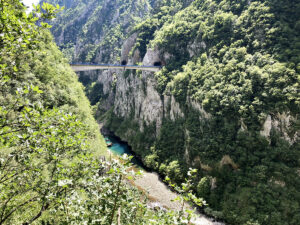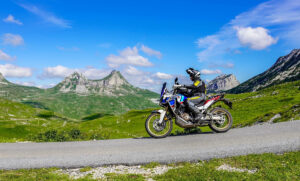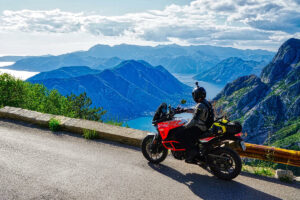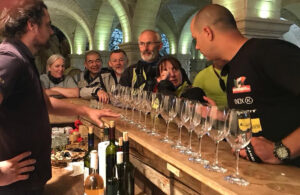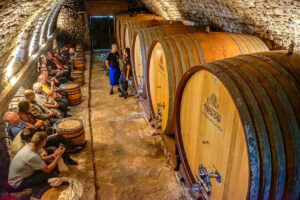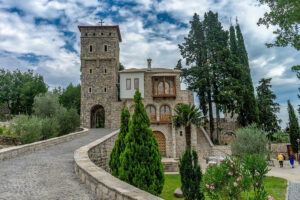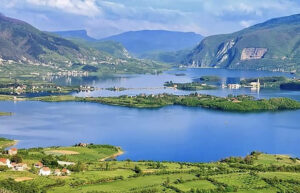“Steeped in natural beauty, history, and culture – Croatia, Bosnia, & Montenegro have it all” – this is the ultimate Balkan Adventure
Over the last 14 years (since 2008) we’ve travelled the Balkans extensively both personally and with guided tours. There is so much to see in this part of the world it’s worthy of a couple of months travelling. Over the years and through many variations of itinerary, we believe this particular tour encapsulates a perfect mix of the very best these 3 countries have to offer within a two week ‘fly & ride’ window. One of the real beauties of this tour is the substantial contrast between the very much westernized parts of Croatia to the old-world and remote mountainous regions of Bosnia & Montenegro – which are equally romantic and enchanting. It’s only been a few years since these countries were off limits for travellers and their names instilled an air of trepidation and suspicion. Not sure if this tour is for you? – give us a call to find out more!
Top Ten (of course there’s lots more!):
- Mostar, Bosnia
- Durmitor National Park
- Bay of Kotor, Montenegro
- Dubrovnik
- Dinaric Alps
Key Info

Introduction – We first visited Croatia, Bosnia and Montenegro in October 2008 – long before Overlanders was established. It was this trip which inspired the business. With a two week window we rode our motorcycles just inside the Albanian border before it was time to turn around for the dreaded long haul back to Cherbourg. We swore never again and spent the next year brainstorming a solution to allow more leisurely and comprehensive travel at the destination as opposed to getting there. During the development and reconnaissance of our Balkan tours we explored many logistical options including using Bologna, Italy as a start/finish location, ferry across the Adriatic etc. In short the only way we could truly explore the Balkans and offer the best possible tour was to start and finish it in Split, Croatia. Less is more. There is a lot to see and do in the Balkans and every day spent here is well spent!
All new itinerary for 2024! Details to follow…

More Information
2024 Suggested Flights
- Arrive Dubrovnik Sunday 15th September
- Aer Lingus: depart Dublin 07:35
- Ryanair: depart Dublin 17:05
- Note: Considering late flight on Sunday – Monday 16th is reserved for bike handover, briefing and free day to explore Dubrovnik
- Depart Dubrovnik Saturday 28th September
- Aer Lingus: 12:50 depart Dubrovnik
- Ryanair: 06:00 depart Dubrovnik
| Day | From | To |
| 1 | Ireland | Dubrovnik |
| 2 | Dubrovnik | Dubrovnik |
| 3 | Dubrovnik | Kotor |
| 4 | Kotor | Kotor |
| 5 | Kotor | Zabljak |
| 6 | Zabljak | Zabljak |
| 7 | Zabljak | Mostar |
| 8 | Mostar | Mostar |
| 9 | Mostar | Jajce |
| 10 | Jajce | Makarska |
| 11 | Makarska | Makarska |
| 12 | Makarska | Korcula Island |
| 13 | Korcula Island | Dubrovnik |
| 14 | Dubrovnik | Ireland |
New detailed itinerary for 2024 to follow…
Day 1 – Split to Dubrovnik
Considering the late arrival the evening before we commence our tour with an easy and relatively short ride south along the Dalmatian coast with the odd detour up into the mounatins for spectacular coastal views. Our destination tonight Dubrovnik (or Kings Landing for those Game of Thones fans) needs little introduction.
Regardless of whether you are visiting Dubrovnik for the first time or the hundredth, the sense of awe never fails to descend when you set eyes on the beauty of the old town. Indeed it’s hard to imagine anyone becoming jaded by the city’s white limestone streets, baroque buildings and the endless shimmer of the Adriatic, or failing to be inspired by a walk along the ancient city walls that protected a civilized, sophisticated republic for centuries.
Although the shelling of Dubrovnik in 1991 horrified the world, the city has bounced back with vigor to enchant visitors again. Marvel at the interplay of light on the old stone buildings; trace the peaks and troughs of Dubrovnik’s past in museums replete with art and artifacts; take the cable car up to Mt Srđ; exhaust yourself climbing up and down narrow lanes – then plunge into the azure sea.
Day 2 – Dubrovnik to Kotor, Montenegro
Leaving the Bay of Kotor behind we head north for the first time and cross back into Bosnia and onwards to our lunch stop at Trebinje.As the southernmost city in Bosnia and Herzegovina Trebinjeis only 28km from the famous city of Dubrovnik. Its old town lines the banks of the Trebisnjica River that flows through the heart of the city. The river and the city have always been known for the enormous old mills treading the Trebisnjica as well as a small ‘lived in’ walled Old Town and a historic stone bridge, there are wine tastings, Serbian-Orthodox churches and a lovable square with a French-Provençale vibe.
Day 3 – Rest Day in Bay of Kotor
Gorgeous, breath taking, majestic, divine; however hefty your thesaurus, the brain-blowing beauty of the Bay of Kotor will leave you struggling for superlatives. Hemmed in by commanding cliffs and shape-shifting between rippling gulfs and sparkling straits, the cobalt cove even manages to defy geographic description: is it a fjord? A submerged canyon? It seems there’s only one way to define BokaKotorska: un-missable. A little leisurely ambling around the lake is on the cards today or better again a boat trip around the bay or for those feeling more energetic – a climb up the mountain overlooking the bay.
Day 4 – Kotor to Vlore, Albania
First on the cards today is a climb up the serpentine road overlooking the bay of Kotor with unrivalled views from the top. The Lovcen National Park is a stark contrast to the Bay of Kotor. On arrival in Albania we head south for an introduction to the Albanian Alps and a visit to Berat before turning west for the coast and the Albanian Riviera. The following days see us head further south along the coast all the way to the border with Greece before turning in land crossing some high mountains on route to Ohrid Lake.
Highlights include:
- Citadel of Berat; a city more than 2,400 years old with a troubled history.
- A night on the Albanian Riviera where the Adriatic and Ionian seas meet; which means clean waters and brilliant beaches. With over 300 sunny days a year, it’s easy to see why it’s a popular beach resort.
- Llogara National Park. The lush forests of pines and oaks are only the beginning of this “mountain of panoramas,” which is beautifully surrounded by numerous mountain ranges and the majestic Ionian Sea.
- Llogara Pass; surrounded by regal forests that remain magically cool even during the scalding heat of the summer. Among them, is the so-called Flag Pine (Pisha Flamur), a century-old tree, bent from the winds into the shape of a flag. Some culinary delights that should not be missed include the hot kulaç (the Albanian version of a hot biscuit) with fresh local butter and cheese, as well as the homemade yogurt, plain or with nuts and the famous Llogara honey.
Day 5 – Vlore to Gjirokaster, Albania
It’s more of the Albanian riviera today as we head further south all the way to the border with Greece before turning inland.
Highlights include:
- Butrint National Park; Of the countless antique ruins and landmarks of Albania, Butrint is the one most responsible for putting Albania on the map. Butrint’s glorious 2500-year-old ruins, within a majestic 30 km wide natural reserve, are some of the most well-preserved in Europe. In 1992, Butrint was declared a World Heritage Site by UNESCO and it sits comfortably at the top of every international list of must-sees in Albania. Though life in Butrint had started long before, the influence of Hellenic culture in Albania officially began in the 6th century B.C. when Greeks from the island of Corfu settled on the hill of Butrint. According to mythology, the city’s antique name of Buthrotum comes from the word buthrotos, meaning “the wounded bull,” which refers to the Trojans’ sacrifice of a bull when they established the town on the hill.
- Gjirokaster; is a city in southern Albania, in a valley between the Gjerë mountains and the Drino, at 300 metres above sea level. Its old town is a UNESCO World Heritage Site, described as “a rare example of a well-preserved Ottoman town, built by farmers of large estate”. The city is overlooked by Gjirokastër Fortress, where the Gjirokastër National Folklore Festival is held every five years. It is the birthplace of former Albanian communist leader Enver Hoxha, and author Ismail Kadare.
Day 6 – Gjirokaster to Lake Ohrid, North Macedonia
Rural. Remote. Mountainous – today includes some special encounters with the locals as we take on the Barmash Pass over the Gramoz Mountains; part of the northern Pindus mountain range.
Highlights include:
- Barmash Pass over the Gramoz Mountains.
- Lake Ohrid is a lake which straddles the mountainous border between the southwestern part of North Macedonia and eastern Albania. It is one of Europe’s deepest and oldest lakes, with a unique aquatic ecosystem of worldwide importance, with more than 200 endemic species.
Day 7 – Lake Ohrid to Peshkopi, Albania
Today is a very short day distance wise allowing us soak up all that’s special in and around Ohrid before an afternoon departure – it’s no wonder this place is so popular!
Highlights include:
- Ohrid Town; Ohrid is North Macedonia’s most seductive destination. It sits on the edge of serene Lake Ohrid, with an atmospheric old quarter that cascades down steep streets, dotted with beautiful churches and topped by the bones of a medieval castle. Traditional restaurants and lakeside cafes liven up the cobblestone streets
- The Monastery of St. John of Kaneo; The small monastery was erected to St. John of Patmos, likely the same person as St. John the Apostle, in the 13th century. The monastery can be reached by a 20 minute hike from the ridge above, or a short boat ride from the main dock in Ohrid.
- Lake Ohrid Boat Ride; The crystal blue waters of Lake Ohrid are the heart and soul of this region. The lake provides food and transportation for many of the inhabitants of the town. One of our favorite things to do in Lake Ohrid was chartering a small boat to take us from the Monastery of St. Jovan of Kaneo out onto the lake for views of the mountains and then back to town. This region needs to be appreciated from the water.
- Bay of Bones; dating back between 1200 and 700 BC, the original prehistoric settlement occupied 8500 square meters. The Ohrid Lake, quite shallow around this period, allowed for a massive wooden structure to be erected above the water, considered by many as one of the largest prehistoric palafittes – Bay of Bones is a partial recreation of the settlement
- The 10th century monastery of St. Naum built upon a rock overlooking Ohrid Lake and on the Albanian / Macedonian frontier.
- Mavrovo National Park; The gorges, pine forests, karst fields and waterfalls of Mavrovo National Park offer a breath of fresh. Beautiful vistas abound, and the park is home to North Macedonia’s highest peak, Mt Korab (2764m)
Day 4 – Peshkopi to Valbona, Albania
Like lots of twisty roads through stunning scenery? Today is the day – not that other days don’t have either – it’s just that today is overload.
Highlights:
- Valbona Valley National Park – considered to be the hidden gem of Albanian Alps. The park covers a total area of 80 km2, encompassing Valbona River and its surrounding areas with mountainous terrain, alpine landscapes, glacial springs, deep depressions, various rock formations, waterfalls and the Valbona Valley with its dense coniferous and deciduous forest. It is characterized by its very remote areas which have a large preserved ecosystem all of which is primarily untouched with pristine quality. This vast pristine ecosystem is the centrepiece of what has been referred to as the Albanian Miracle of the Alps.
- Sections of road among the very best we’ve ever ridden!
- Stay in an rural Agrotourism Hotel for a real sample of Albanian cuisine.
Day 9 – Valbona, Albania to Zabljak, Montenegro
It’s a world of mountains and gorges as we meander our way through the highlands of Northern Albania and Eastern Montenegro. Today we visit the Tara River Canyon (deepest in Europe and second deepest in the world after Grand Canyon) & Bridge in Durmitor National Park.
Day 10 – Rest day in Zabljak with optional activities in the Tara River Canyon
Montenegro: which means “Black Mountain” borders Croatia, Bosnia, Serbia, Serbia’s breakaway province of Kosovo and Albania. About half of it is covered in thick forest. The pearl of the Mediterranean is situated in the south of the Adriatic. Nowhere else can you find so much natural wealth, beauty, mild beaches, clear lakes, fast rivers and gorgeous mountains in such a compact area as in Montenegro. In the morning you can wake up along the beautiful Adriatic coast, have lunch on the banks of Skadar Lake and enjoy an evening walk in the Montenegrin Mountains.Durmitor is a stunning limestone massif located in Northern Montenegro and belonging to the Dinaric Alps or Dinarides. It is also the name of Montenegro’s largest protected area, the Durmitor National Park, which constitutes the heart of a landscape shaped by glaciers, numerous rivers and underground streams of which are embedded in the much larger Tara River Basin Biosphere Reserve. Some fifty peaks higher than 2,000 metres above sea level rise above plateaus, alpine meadows and forests, including Bobotov Peak (2,525 metres above sea level). From December to March, Durmitor is a major ski resort, while in summer it’s popular for hiking, rafting and other active pursuits.
Day 11 – Zabljak, Montenegro – Mostar, Bosnia
Leaving the Durmitor National Park behind we travel north before turing west for a rural border crossing into Bosnia and onwards to our destination Mostar. First though we must travel through the Perucica Rain Forest. Rainforest? Not quite, but almost. Bosnia is home to Perućica, one of the last remaining primeval (old-growth) forests in all of Europe. So while it may not be the Amazon rainforest it is the closest you will get in Europe. This is remote and rural Bosnia at its very best as we make our way to a city that needs little introduction.
Day 12 – Rest Day in Mostar
Formerly one of the most ethnically diverse cities in the country, and today suffering geographical division of ethnic groups. Mostar was the most heavily bombed of any Bosnian city during the war in Bosnia and Herzegovina following the breakup of Yugoslavia.
At dusk, the lights of numerous mill house restaurants twinkle across gushing streamlets. Narrow alley ways bustle joyously with trinket sellers and in between, the Balkans’ most celebrated bridge forms a majestic stone arc between reincarnated medieval towers. It’s an enchanting scene to say the least and if you’re lucky you’ll get to witness some of the local adrenaline junkies jumping off the bridge.
Of course there’s plenty of rideout options nearby to the like of Buna River Spring, Medugorje, Sarajevo etc for those feeling more energetic.
Day 13 – Mostar to Split, Croatia
Our route from Mostar to Split is a fitting end to our Balkan adventure as we travel north and west through rural countrydie with beautiful scenery. On route we will visit the beautiful Ramsko lake and Franciscan Monastery Rama-Šćit. Proudly standing in the middle of the lake, with road leading to it, this picturesque monastery is a witness of rich history of Bosnia and Herzegovina. The franciscans built the monastery in 15th century, before the arrival of the Ottomans. It was destroyed few times throughout history, but rebuilt again every time. The monastery also served as prison during communism time in ex Yugoslavia.
Day 14 – Split (optional local rideout before evening flight)
North or south theres lots of fantastic biking and stunning landscapes on offer. Alternatively, a day strolling around the sights of Split is highly recommended. The largest city on the Adriatic Coast, Split has been under Roman, Venetian, Austrian, French, Italian, and Yugoslav rule. The Old City is a UNESCO World Heritage Site, and must-see historic attractions include Diocletian’s Palace, the Cathedral of Saint Domnius, and the striking Grgur Ninski Statue. Take time to stroll along the Riva Harbour, browse through the Green Market, and sample the restaurants and wine cellars.
We will be providing a more detailed itinerary on arrival to include hotel info and GPS co-ordinates. Please note that this is an outline route and maybe subject to change.
Included:
- Return transport of your motorcycle from our base in Gorey, Co. Wexford to Split, Croatia with option to return from Memmingen, Germany
- B&B accommodation in quality 3 – 5 star hotels.
- Evening meals on selected riding days.
- Tour guide(s)
- Detailed route maps / itinerary etc. allowing some self-guiding if preferred.
Not Included
- Any travel costs to get to the start and from the finish point for the tour.
- Personal travel, accident and medical insurance (covering matters such as medical expenses, repatriation, cancellation, curtailment, loss or damage to property)
- Motorcycle insurance cover, motorcycle breakdown cover or recovery costs. Green Card insurance purchased on the borders of Bosnia and Monetenegro typically costs €10 per country.
- Entrance fees to sights and parks, optional local excursions or local activities, (except where stated)
- Lunches or snacks (except where stated). Any meals whilst on board ferries. Evening meals on rest/optional ride out days.
- Personal spending money, tips, souvenirs or other extras.
- Personal documentation (eg visas, passport), vaccinations, personal taxes, border crossing fees, motorcycle documentation
- Costs of motorcycle repair (parts, labour or other related costs), tyres
- Fuel, oil & other motorcycle consumables
- Toll road fees, traffic fines or other charges relating to breach of the law
- Any other item not specifically included in the price.
Hotels
As with all our guided tours we carefully select very good standard 3 to 5* hotels. Over the years we have built up a vast selection of tried and tested hotels around the world and we select hotels for their character and service rather than just on their star rating. Hotel standards vary all over the world and a 4* in Africa or South America is not always the same as in Europe. In some more remote locations, we may use equivalent 3* hotels or the best available in the area, which could be a more family run establishment, with local character.
Pre trip we provide you with Tour Specific Information that gives you detailed information about how to prepare and plan your tour, and what to expect when on tour. These are a few FAQ that many people have. If you have any further queries or concerns please do not hesitate to contact us.
What bike is suitable to bring?
Generally speaking we recommend adventure or touring style motorcycles as the most suitable. However, sports, sport-touring and cruiser motorcycles may also be suitable subject to you being comfortable riding it for the distance and duration of the tour and that it has been properly prepared and adequately serviced with good tyres.
What riding experience do I need?
Generally speaking we recommend all participants to be experienced tourers in Europe and/or beyond. Obviously, some destinations are easier than others, as classified by our difficulty ratings, and should you have concerns please do not hesitate to contact us. It is your responsibility to ensure your motorcycling skills are up to the requirements for this tour. Obviously advanced riding skills increase enjoyment factor and reduce risk.
Do I have to ride in a group?
No! We do not make you ride in convoy and we offer you the freedom to decide how you would like to ride. However, we find most people prefer to ride with the group without the need to navigate. We use either the ‘drop off’ or ‘buddy’ systems when group riding (depending on country and complexity of navigation); these are tried and tested systems of group riding and allow riders to ride at their own pace. Full details are provided at pre-trip briefings. Daily departure times are set every evening for the following morning depending on the days route and points of interest. If you prefer to ride on your own, we provide you with a map and route cards with recommendations for lunch or coffee stops and hotel information. We offer a very flexible approach with an emphasis on maximum enjoyment.
Is this ride suitable for a passenger?
Yes. Pillion passengers should be experienced tourers / travellers.
What is the average group size?
Our groups are normally between 8 – 14 riders (some riders will have passengers). Most riders are from the Ireland, but we do also have overseas riders who may take part.
What documents do I need?
You will need your original documents as follows:
- Passport and Driving Licence. Passengers only need their passport. As a general rule, passports should be valid for at least 6 months after the end of the tour; however, this may be shorter in some European countries.
- If you are bringing your own motorcycle, you will also need your motorcycle registration document (RF101 / log book) and your motorcycle insurance.
- In addition, you must have valid travel/medical insurance.
- Visas as required Please ensure that you are fully aware of all passport and visa requirements and that you allow adequate time to obtain them.
What will the weather be like?
Depending on season / time of year we will advise expected weather conditions in the pre-trip information and also suggest the most suitable gear based on our experience. It is imperative that tour participants have suitably adequate gear. Please note our tour calendar is carefully planned taking into account the most suitable seasons / local weather for the destination. However, as much as we would like, we cannot always guarantee the best weather. Particularly considering the un-predictable climates the world has been experiencing.
What about my health when I am abroad?
You need to be physically fit and healthy and also take the necessary health precautions. It is essential for you to consult your doctor or travel clinic for up-to-date medical travel information prior of travel, particularly if you have a pre-existing medical condition. Please ensure that you are fully aware of all official travel advice, local customs, current affairs, travel requirements and medical/travel advice. Please check with your GP regarding recommended inoculations.
Do I need Travel / Medical Insurance?
It is a condition of you travelling with us that you are adequately insured. Your insurance policy must cover you for the costs of any medical expenses, medical treatment or repatriation needed, due to injury or illness on this trip, including those that occur whilst motorcycle touring, either as the rider or a passenger. It is important that your insurance company understands that the main purpose of your trip is motorcycle touring, using your own large capacity cc motorcycle or a rental motorcycle. Your insurance must cover you for the full duration of the trip and for all countries we travel through.
In addition, we strongly recommend that your insurance policy has cover for loss or damage to your personal belongings, delay at your outward or homeward point of departure, personal liability, overseas legal expenses and cancellation and curtailment. We do not refund your deposit simply because you failed to take out insurance in sufficient time. Some travel insurance policies do not cover motorcycle travel over a certain cc or for a prolonged duration.
Minimum Numbers
We require a minimum number of 8 riders on this tour. If we do not have this number of bookings, then we reserve the right to cancel the tour.
Booking:
- Overlanders may accept a booking online, via telephone or by email. To confirm a booking a deposit is required – once the deposit is received the booking is confirmed.
Payments & Fees:
- A deposit is required at time of booking.
- Guided tours – 50% required at least 60 days prior to the shipment / travel date.
- All payments must be made in full at least 30 days prior to the shipment / travel date.
Cancellation/Amendments/Refund Policy:
- Please note that all payments and deposits are non refundable nor transferrable if cancellation accrues within one month before the shipment / tour date.
- Where possible we will try to accommodate any amendments you wish to make.
- In the event of curtailment no refunds shall be made.
- Refunds may be processed via the original method of payment, except for cash transactions where refunds will be provided by cheque.
Preparation for Shipping (if applicable)
- All rider/pillion gear including boots and helmets should be packed into a kit/sports bag and labelled with the owners name, bike make/model and registration. One kit bag permitted per person.
- Please note loose items or items tied onto the motorcycle will not be transported.
- Bin liners, rubbish bags, cardboard boxes etc are not acceptable.
- Motorcycles should be in a clean and presentable condition both for outbound and return shipments. If your motorcycle is considerably dirty post trip please wash it before returning it.
- All Luggage (hard and soft panniers) should be left unlocked and removable from the motorcycle if necessary for transport purposes.
- Alarms should be switched off or in “Ferry” mode for transport purposes.
- Fuel level should be kept relatively low. All our depots are within a few km of fuel stations.
- Keys for both the motorcycle and luggage should be left with the motorcycle.
- At handover we will require a signed customs declaration form and a photocopy of the registration document / log book stapled together. Customs declaration from will be emailed pre-shipment. These should only be handed over in hard copy at time of delivery.
- Do not email copies in advance.
- We will not accept original copies of registration documents/log books.




